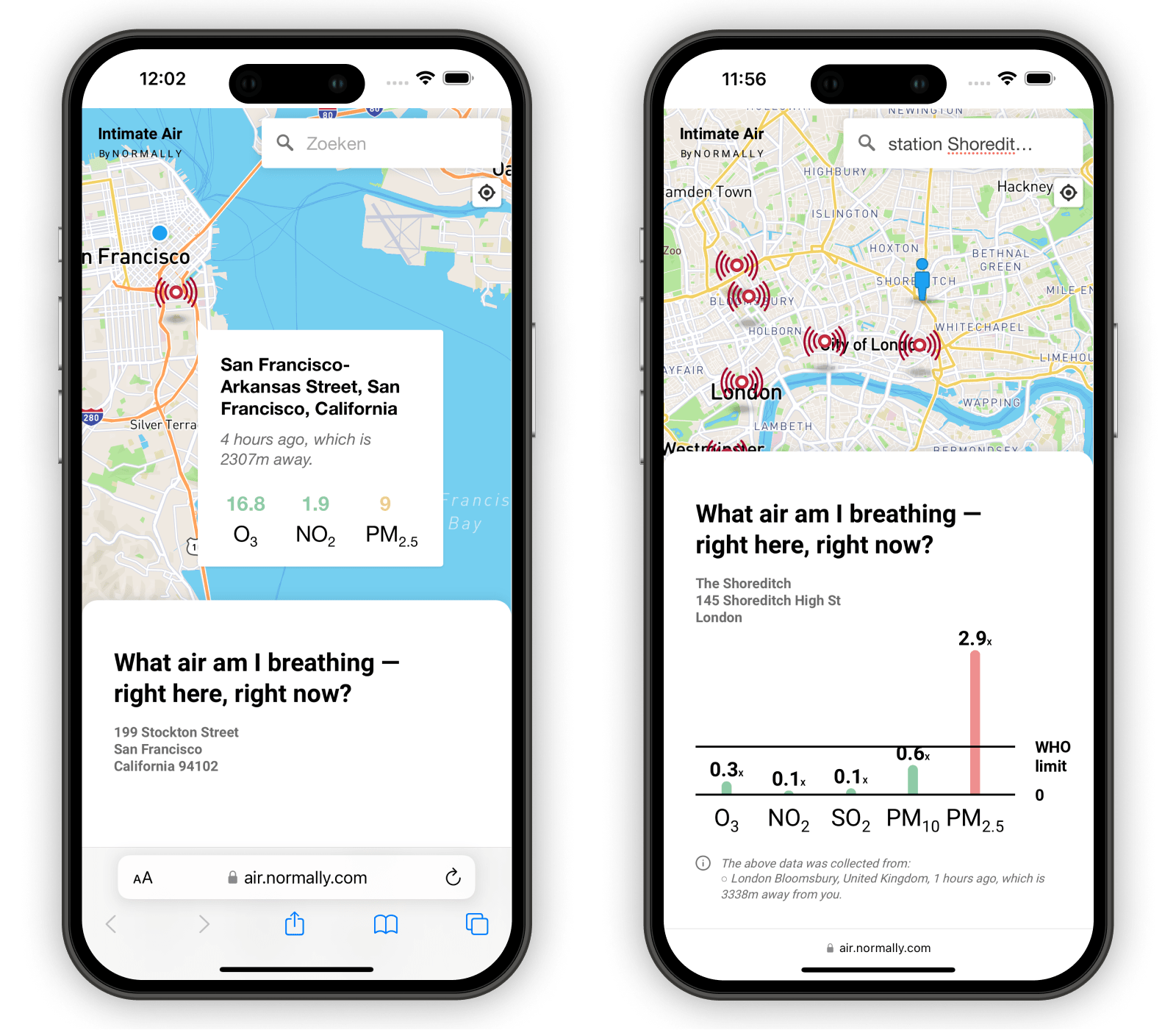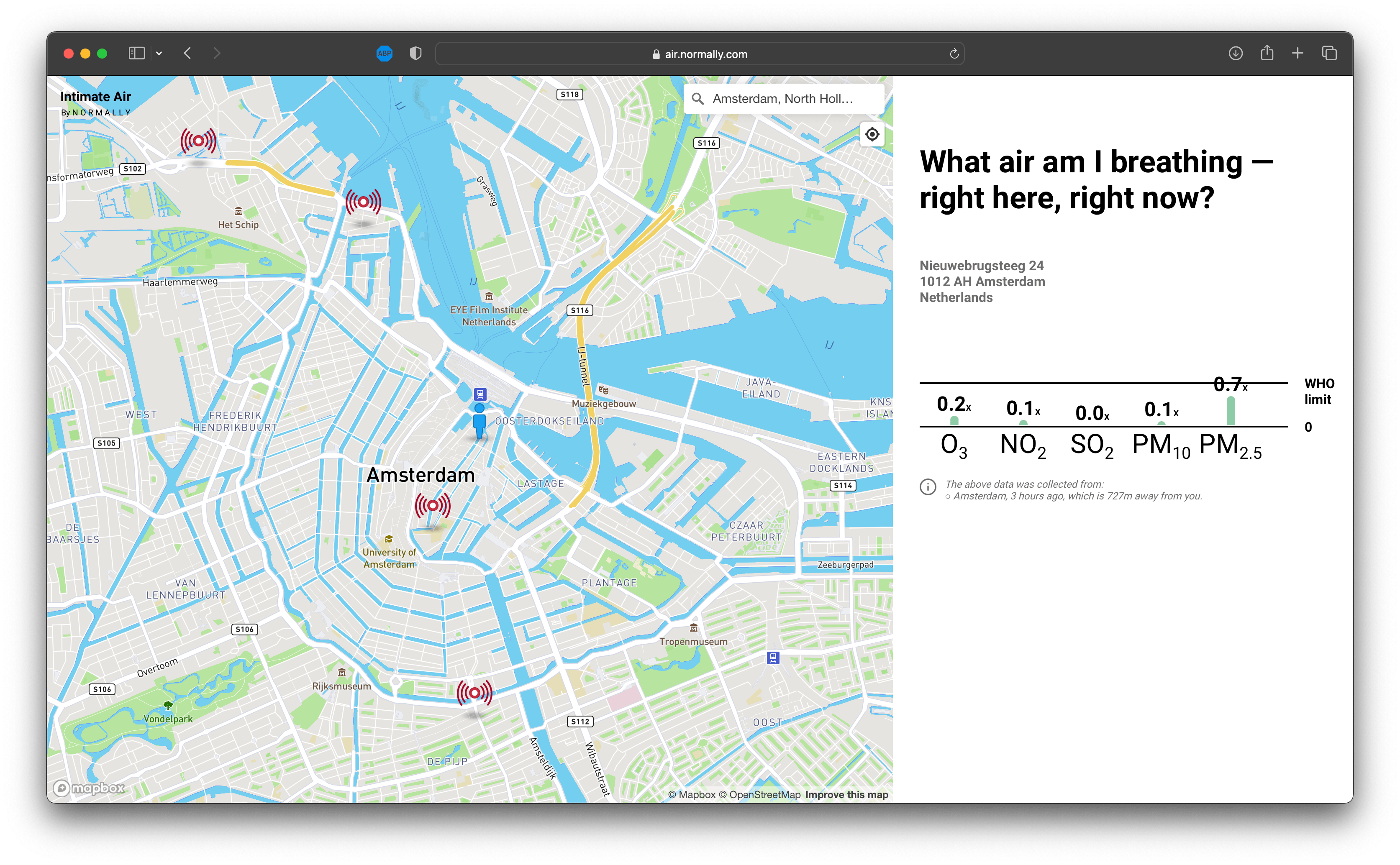The air we breathe is like an invisible soup that has all kinds of elements. Some we depend on like oxygen, while others can be harmful.

Intimate Air aims to provide real-time, location-based insights into the air quality around us. By combining air data with your location, it helps you understand the elements you are currently breathing and how they may affect your health. To make the information easier to grasp, the bars in the graph are relative to the WHO limit. If a value exceeds this limit the bar turns red indicating this element can cause lasting damage.
Besides providing real-time data where you are, you can also search for any location in the world and get insights into the air quality there. By dragging the blue man around, just like Google Street View, you can explore the area and its data points across the map.
The data is not perfect.

Although this tool provides insights into air quality, it also shows the lack of data and how little we know about air. While government air quality data sets are aimed at informing policy, personalizing this information for individuals is a newer concept. During my research on air quality, I spent weeks walking around London with a mobile air sensor and found that air quality can vary greatly in a short distance due to factors such as altitude, wind, and traffic. I found that a city can have pockets of clean and dirty air. Plume Labs is a great example of a company that is working towards real-time mapping of air quality that offers the granularity much more needed for individuals.
While air is a commodity that impacts our health, life expectancy, and especially the growth and development of children, we don’t seem to know how to act on polluted air. Understanding the air we breathe can help us make better choices about where we want to live and how we want to shape our cities, particularly in regards to the placement of schools and housing to minimize the impact of pollution on the most vulnerable in society.
As is often the case, this data exploration raises more questions than it answers. I hope at least that it increases the optics and awareness of air quality in cities and helps us make better choices in how and where we want to live now and in the future.